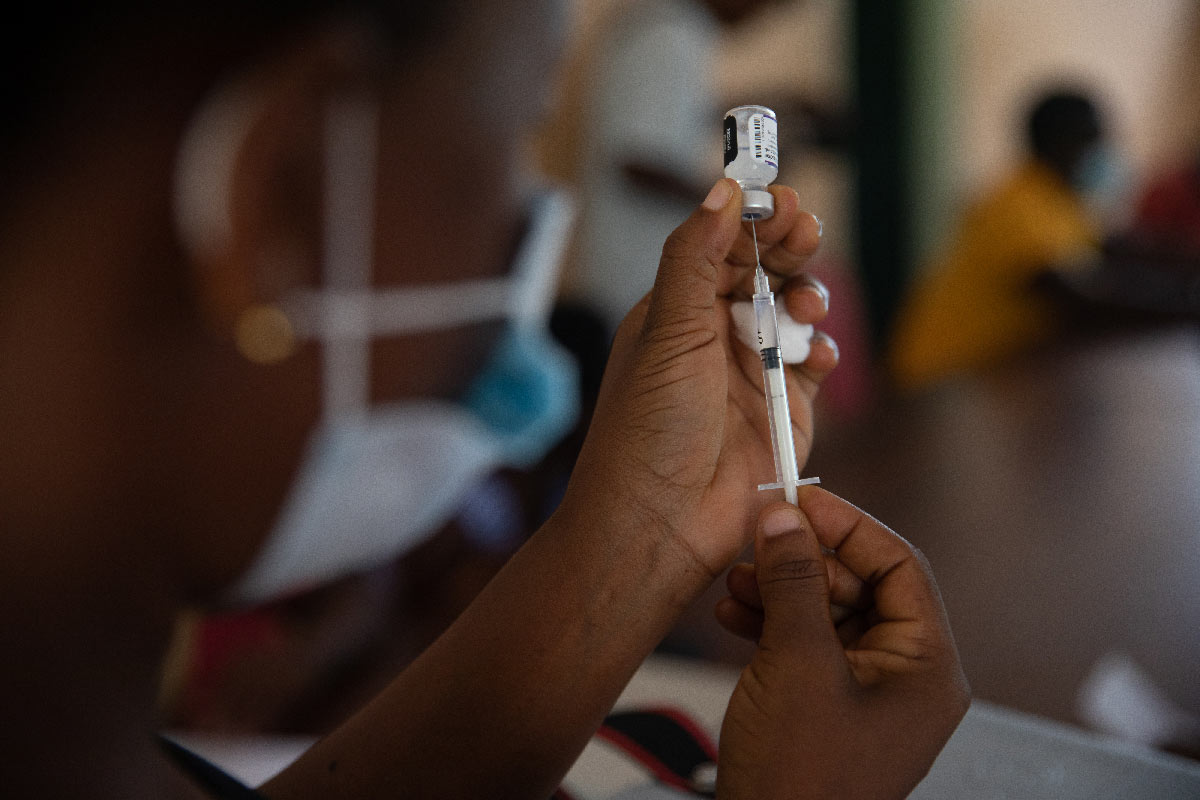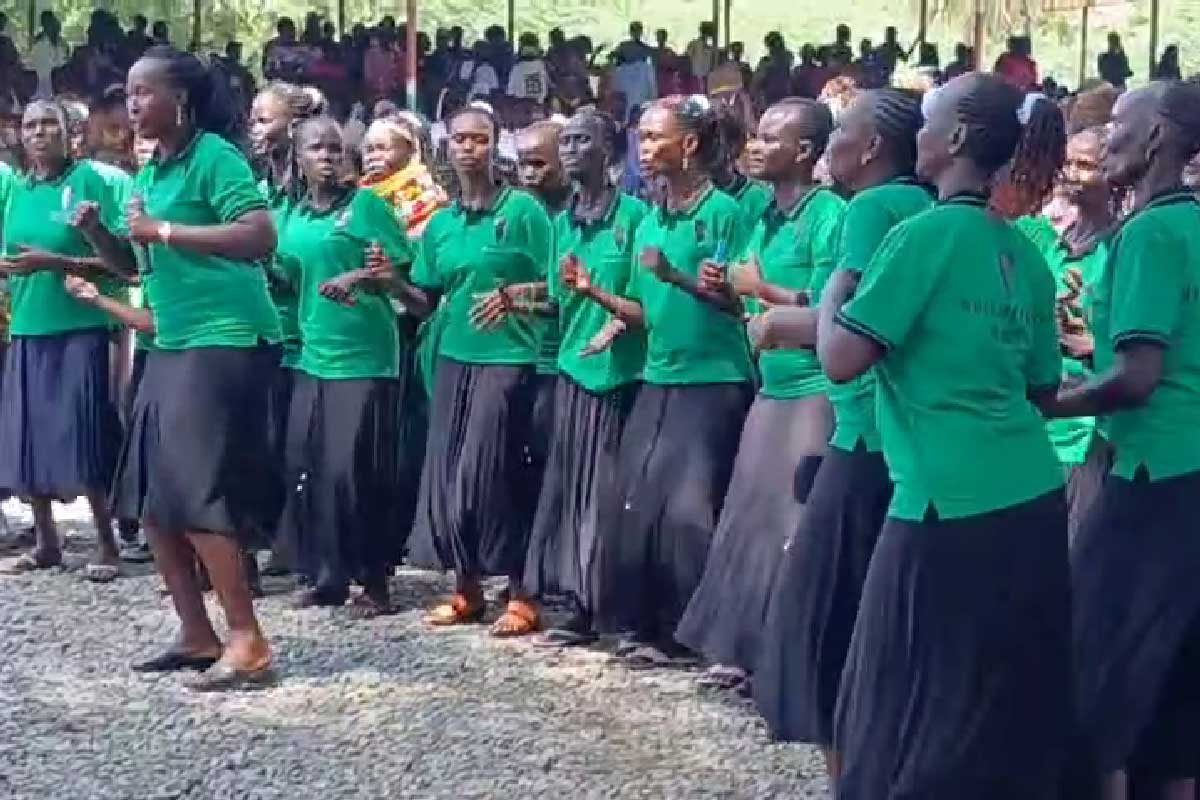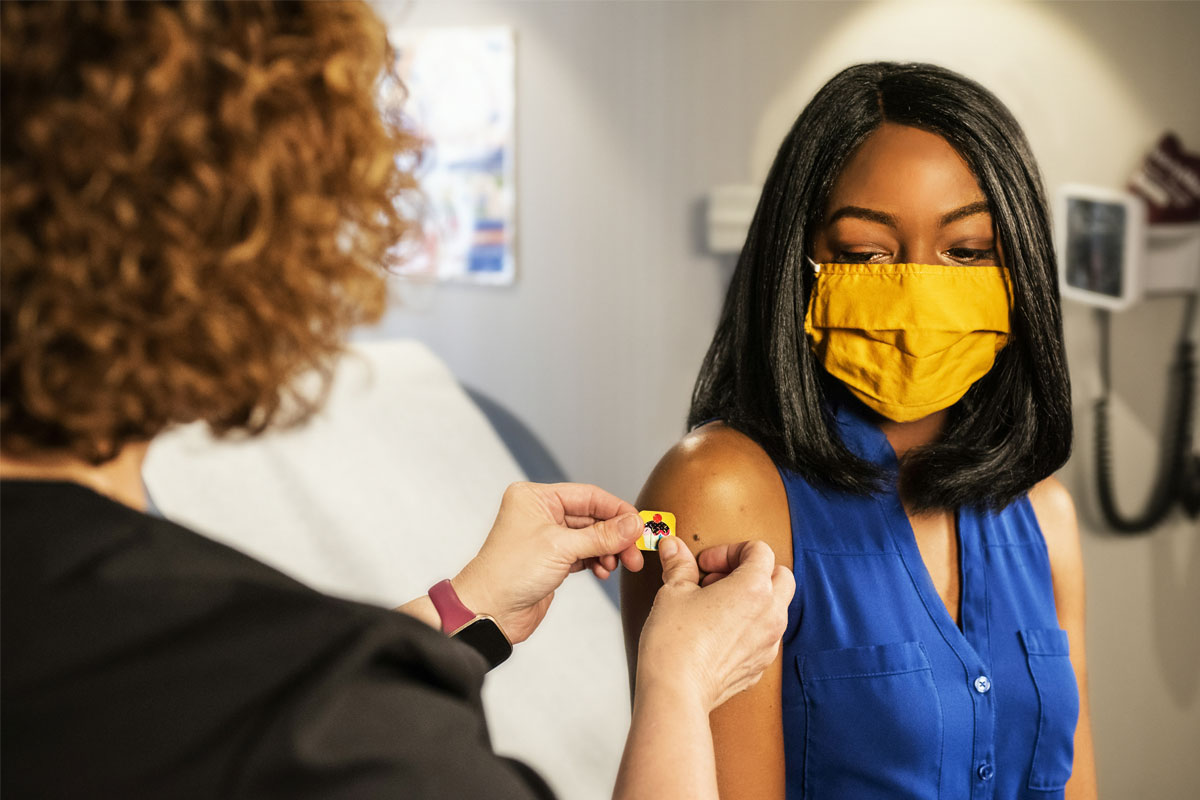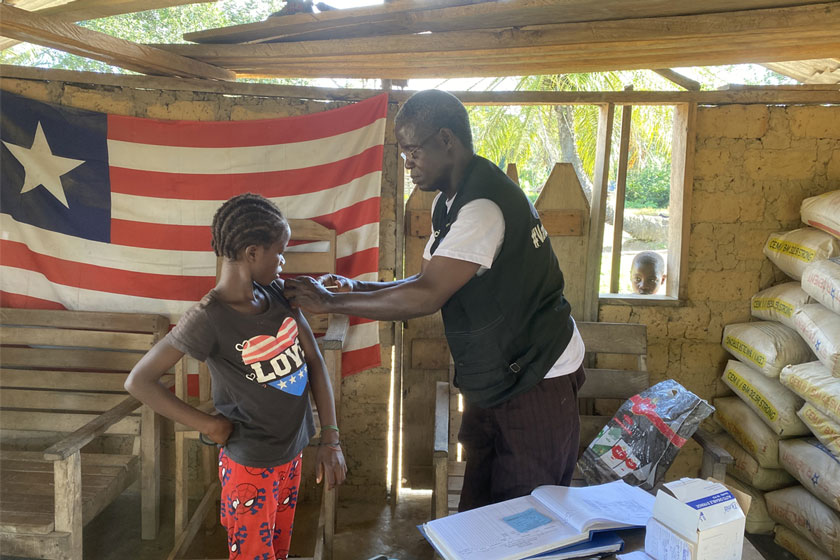How Kenya’s new typhoid vaccine rolled out in the heart of the most-at-risk communities
Convenience can be a matter of life or death – that’s why health workers in Kibra, Kenya’s largest slum, bring new jabs to church, to market and to doorsteps.
- 24 September 2025
- 5 min read
- by Victoria Amunga
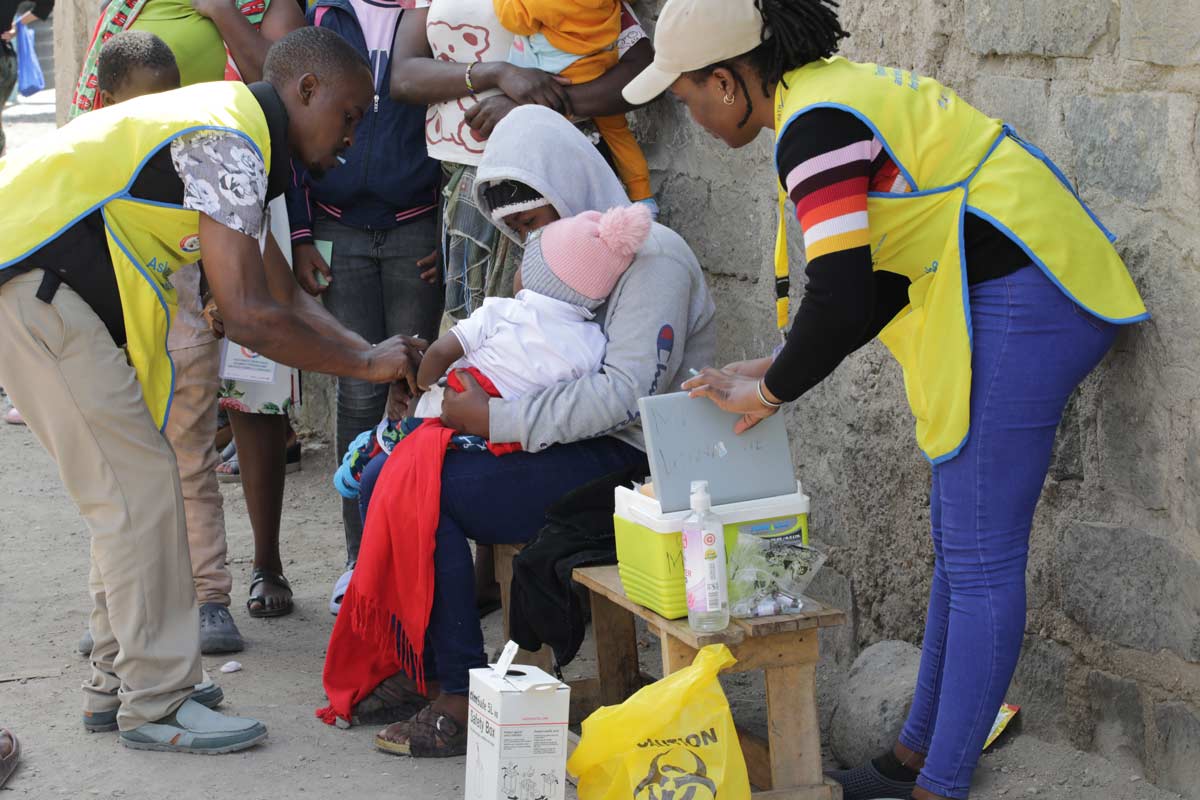
On the compound of their church in Nairobi, Nancy Iramwenya and two of her three children, a nine-year-old daughter and a six-year-old son, joined a queue. They weren’t waiting for a benediction or a communion wafer, but for a vaccine: Iramwenya was one of dozens of parents and guardians here who had heeded the call to bring children of up to 16 years of age for a jab against typhoid.
Multidrug-resistant strains of typhoid have in recent years been on the rise in Kenya, and children under 15 account for more than half of both cases and deaths from the bacterial infection in the country. But beginning in early July, typhoid conjugate vaccines (TCVs) – which block the infection from setting in in the first place and get around the complicated question of treating an antibiotic-resistant sickness – have been available to the public.
During the initial ten-day introduction campaign, the state health system set up vaccination outposts in community centres like market places and churches in order to bring the vaccine closer to the public. Health workers staffing those sites also offered measles-rubella vaccines to eligible kids. Measles has recently resurged in parts of Kenya.
Working parents like Iramwenya described vaccination pop-up sites like this one as a relief. “It is easier for a person like me who runs a day-care. I don’t have the time to leave the day-care so that I can take my children for vaccination.”
“A serious disease”
Health authorities explain that TCVs – officially part of Kenya’s routine immunisation schedule since the July introduction – offer protection to children for four years or more. Children become eligible at nine months of age.
The programme is one parents have welcomed. “You see like in Kibra, there is a lot of sewage, children play in it – and we eat the food that is cooked by the roadside, so the children have to eat very dirty food. It’s better when they are vaccinated, so that the disease will not affect them a lot, even if it comes,” said one parent, resident in the sprawling Kibra informal settlement.
More often debilitating than deadly, frequently demanding long, slow recovery periods, typhoid nevertheless claimed close to 1,600 lives in Kenya in 2021 alone. Some 126,000 people were reported ill in the same year.
Still, those figures don’t tell the whole story. Lilian Mutua, Head of Health Promotion for Nairobi County, told VaccinesWork that under-diagnosis of typhoid has tended to worsen outcomes, especially in children under 15 years.
“Typhoid is a serious disease. It would normally be confused with other illnesses because it presents with [common] issues like fever, abdominal pain; some patients may have diarrhoea, so at times because the clinicians or the medical team will not think ‘typhoid’, they will not even send you for testing. They might treat you for other things,” she explained.
Even when typhoid is identified correctly, it can be difficult to cure. In 2021, the Coalition Against Typhoid found that 82.4% of all the typhoid case samples collected across the country were resistant to all five drugs commonly used to treat the disease: tetracycline, chloramphenicol, streptomycin, cotrimoxazole and ampicillin.
“We are having the antimicrobial resistance, where you find that the antibiotics that people are supposed to get already – because of misuse or overuse or self-prescribing – may not take the expected effect,” explained Mutua. “So we need to safeguard our population, especially the young ones. That is why [the vaccine] has been introduced – and not only in Kenya but other countries globally.”
Have you read?
Bringing the vaccine into the community
Lilian Oko has done community health work in Kibra for over a decade. VaccinesWork joined her as she prepared to go out on rounds, visiting homes in the community. She explained that door-to-door campaigns are improving vaccine uptake.
“When we enter the house, the first thing I must ask for is the children’s clinic records book. As a community health worker, I would know just by looking through the book whether the child has attended a clinic or not. If I find out that the child has not been vaccinated or missed any vaccination it’s my responsibility to write them a referral, and ensure the child has been taken to a hospital to get the vaccination that the child is missing,” she said.
Home visits prove crucial especially in informal settlements, where people tend to be more reluctant to seek medical attention. “Sometimes we find sick people in the houses: some are afraid of going to the hospitals, so we carry them to the hospital. That is helping to improve the health of our people.'”
Especially in busy, low-income communities like this one, convenience is more than a matter of comfort. Extending accessibility can be a literal life-saver – like when vaccination campaigns set up camp at busy marketplaces or places of worship. Following her children’s inoculation at church, Iramwenya said, “It made it so easy for me. It was good – I was so happy.”
By its end, the July campaign had reached no fewer than 16.1 million children against typhoid and inoculated 5.18 million eligible kids with the measles-rubella vaccine.
More from Victoria Amunga
Recommended for you

